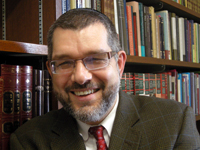Abramson, Henry. A Prayer for the Government: Ukrainians and Jews in the Revolutionary Times, 1917—1920 (Harvard University Press, 1999).
Assaf, David. The Regal Way: the life and times of Rabbi Israel of Ruzhin (Stanford: Stanford University Press, 2002).
Aster, Howard, and Potichnyj, Peter. Ukrainian-Jewish Relations in Historical Perspective. (Alberta: Canadian Institute for Ukrainian Studies, 1990).
Brandon, Ray, and Lowy, Wendy, eds. Shoah in Ukraine: history, testimony, memorialization (Bloomington: Indiana University Press, 2008)
Janusz Bardach, Surviving Freedom: After the Gulag (Berkeley: University of California Press, 2003).
Petrus Buwalda, They Did Not Dwell Alone: Jewish emigration from the Soviet Union, 1967—1990 (Baltimor: The Johns Hopkins University Press, 1999).
Dekel-Chen, Jonathan. Farming the Red Land: Jewish Agricultural Colonization and Local Soviet Power, 1924-1941 (New Haven: Yale University Press, 2005).
Frankl, Jonathan, Prophecy and Politics Garrard, John and Carol. The Bones of Berdichev: the Life and fate of Vasily Grossman (New
York: The Free Press, 1996).
Gitelman, Zvi. Jewish Nationality and Soviet Politics: The Jewish Section of the CPSU, 1917—1930 (Princeton: Princeton University Press, 1972).
Heschel, Abraham Yehoshua. “The Eastern European Era in Jewish History,” Studies in Modern Jewish Social History. Ed. by Joshua Fishman (KTAV Publishing House, 1972), 3-23.
Himka, John-Paul. Ukrainians Jews, and the Holocaust: divergent memoirs (Saskatoon:Heritage, 2009).6
Hundert, Gershon, ed. The YIVO Encyclopedia of Jews in Eastern Europe (New Haven: Yale University Press, 2008). Available on the Internet: http://www.yivoencyclopedia.org/
Katz, Dovid. Words on Fire: the unfinished story of Yiddish (NY: Basic Books, 2004).
Khanin, Zeev. Documents on Ukrainian Jewish Identity and Emigration (London: Frank Cass, 2003).
Mendelsohn, Ezra. Class Struggle in the Pale: the Formative Years of the Jewish Workers’ Movement in Tsarist Russia (Cambridge: Cambridge University Press, 1970).
Meir, Nathan. Kiev: a Jewish metropolis (Bloomington: Indiana University Press, 2009).
Miron, Dan. The Image of the Shtetl and Other Studies of Modern Jewish Literary Imagination (Syracuse: Syracuse University Press, 2000).
Moss, Kenneth. Jewish Renaissance in the Russian Revolution (Cambridge, Mass.: Harvard University Press, 2009).
Nathans, Benjamin. Beyond the Pale: the Jewish encounter with Late Imperial Russia (Berkeley: University of California Press, 2002).
Polonsky, Antony. Jews in Poland and Russia. 3 vols. (Oxford and Portland: Littman Library, 2010-2011).
Polonsky, Antony, ed. POLIN: Journal in Polish-Jewish Studies, ed. by Antony Polonsky, nos. 1-26 (1991-2013) (Oxford and Portland, OR.: Littman Library of Jewish Civilization).
Rosman, Murray (Moshe). Founder of Hasidism: a Quest for the Historical Ba’al Shem Tov (Berkeley: California University Press, 1996).
Redlich, Simon. Together and Apart in Brzezany: Poles, Jews, and Ukrainians, 1917-1945 (Bloomington: Indiana University Press, 2002).
Rubenstein, Joshua. Stalin’s Secret Pogrom: The Postwar Inquisition of the Jewish Anti-Fascist Committee (New Haven: Yale University Press, 2001).
Rudnytsky, Ivan L. Essays in Modern Ukrainian History (Edmonton: Canadian Institute of Ukrainian Studies, 1987).
Sicher, Efraim. Jews in Russian Literature After the October Revolution: Writers and Artists between Hope and Apostasy (Cambridge: Cambridge University Press, 1995).
Shneer, David. Yiddish and the Creation of Soviet Jewish Culture, 1918—1930 (Cambridge University Press, 2003).
Shternshis, Anna. Soviet and Kosher: Jewish popular Culture in the Soviet Union, 1923-1939 (Bloomington: Indiana University Press, 2006).
Jeffrey Veidlinger, The Moscow State Yiddish Theater: Jewish Culture on the Soviet Stage (Bloomington: Indiana University Press, 2000).
YPS’s selected publications on Jews in Ukraine:
BOOKS
The Golden Age Shtetl: a New History of Jewish Life in East Europe (Princeton: Princeton University Press, 2014), in press.
POLIN: Jews and Ukrainians, vol. 26 (Oxford and Portland: Littman Library of Jewish Civilization, 2013), co-edited with Antony Polonsky.
The Anti-Imperial Choice: the Making of the Ukrainian Jew (New Haven: Yale University Press, 2009).
ARTICLES AND BOOK CHAPTERS
“In Search of a Lost People: Jews in Present-Day Ukrainian Historiography,” East European Jewish Affairs, no. 1 (2003): 67-82.
“The Revival of Academic Studies of Judaica in Independent Ukraine,” a book chapter in Jewish Life after the USSR: A Community in Transition, ed. by Zvi Gitelman, Marshall Goldman, (Bloomington: Indiana University Press, 2003), 152-172.
“Do ievreis’ko-ukrains’koho dialohu: Roman Rakhmannyi,” (Toward a Ukrainian-Jewish Dialogue: The Case of Roman Rakhmanny), Yehupets, no. 14 (2004), 353-362.
“Jews in Ukrainian Thought: Between the 1940s and the 1990s,” The Ukrainian Quarterly vol. LX, nos. 3-4 (Fall-Winter 2004): 231-270.
“The Drama of Berdichev: Levy Yitshak and His Town,” POLIN, no. 17 (2004), 83-95.
“Ukraine-Jewish Culture” in Encyclopedia of Modern Jewish Culture, ed. by Glenda Abramson. 2 vols. (London and New York: RoutledgeCourzon, 2005), 2: 915-921.
“Russian Legislation and Jewish Self-Governing Institutions: the case of Kamenets-Podol’sk,” essay, and “The Minute-book of the Kamnits (Kamenets) Burial Society,” the 1798/99 Hebrew document, a translation, with commentary, Jews in Russia and Eastern Europe, no. 1 (56) (2006), 107-130.
“The Marketplace in Balta: Aspects of Economic and Cultural Life,” East European Jewish Affairs, vol. 37, no. 3 (2007): 277-298.
“Ukrainian literature,” The YIVO Encyclopedia of Jews in Eastern Europe (New Haven: Yale University Press, 2008), 2: 1937-1940.
“Slaviansko-evreiskie kontakty v oblasti prakticheskoi magii i narodnoi meditsiny” (SlavicJewish Contacts in the Realm of Practical Magic and Popular Medicine), two articles forthcoming in Israel Bartal, ed., Istoriia evreev Rossii (A History of the Jews in Russia), in 3 vols. (Jerusalem: Zalman Shazar, 2008), 453-475. In Russian and Hebrew.
“Moshko Imperskii,” Ab Imperio, no. 1 (2009): 115-148.
“An Unlikely Alliance: the 1907 Ukrainian-Jewish electoral coalition,” in Nations and Nationalism, vol. 15, no. 3 (July, 2009), 483-505 (co-authored with Joshua Shanes).
“’Nalezhaty do tykh, koho vbyvaiut’. . . : vnutrishnii vybir Leonida Pervomais’koho,” Judaica Ucrainica (Kyiv), vol. 1 (2012), 317-405.


